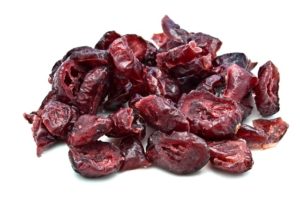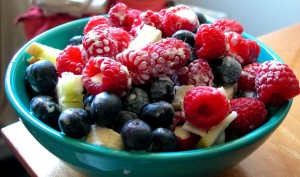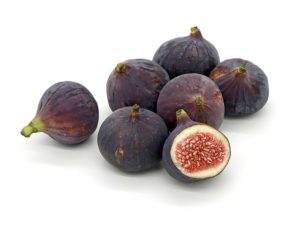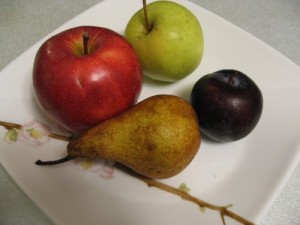There are so many reasons to consume more high-fiber foods, and what’s a more delicious way of doing so than eating healthy high fibre fruits.
Why Should You Eat High Fibre Fruits?

These healthy high-fiber fruits are packed with vitamins, minerals, antioxidants, and medicinal compounds, providing extra benefits to a high fiber diet plan.
Consume a wide variety of fruits with different flavors and colors to ensure you get fruits high in fibre all year round.
In-season fruits organically grown or spray-free is best.
The American Cancer Society recommends two servings of fresh fruit daily, but remember that any cooking or processing will likely reduce the overall nutrition in fruit, including dietary fiber.
High Fibre Fruits
Figs
Figs have one of the highest fibre contents of the fruit world, making up nearly 4% of fresh figs and 10% of dried figs.
The majority of the fiber is water-soluble pectin,
Pectin has been well-researched in other fruits (like apples and pears) to improve digestion and reduce colon cancer risk.
Animal studies have also shown that figs in the diet can effectively treat constipation.
Figs are very high in sugar, but the presence of good dietary fibre slows down the absorption of sugar into the body, so eating figs will have a lesser effect on blood sugar balance and weight gain.
Some of the phytochemicals in figs, namely lupeol, have been studied in-depth for their beneficial effects on cancer, prostate health, inflammation, cardiovascular disease, arthritis, and malaria.
Apples & Pears
Apples and pears are two fruits that have a fantastic healthy fiber content
Dietary fibre makes up approximately 3-4% of the weight of both fruits.
The primary dietary fibre being pectin in both these fruits.
Just one pear or one apple will make up one of the two servings of fresh fruit that people are recommended to consume each day, and it is such a simple and delicious snack.
The pectin in apples is known to reduce the risk of colon cancer, high cholesterol, rheumatism, and diabetes. While apple juice is a popular choice as a natural beverage for many people, it requires pectin fiber to balance out the fruit sugars naturally found in apples.
Pectin slows down sugar absorption and improves insulin activity. Without the pectin, apple juice and pear juice are mostly fructose, organic acids, and vitamins.
Cranberries
Studies have shown that these high-fiber fruits improve blood sugar balance, cardiovascular health and reduce the risk of some types of cancer.
Cranberries are the fruit commonly thought of as a natural remedy to support urinary tract health in women, but they are also healthy high fibre fruits.
These tart red berries can contain up to 7% dietary fiber, depending on where they are grown. Along with high levels of vitamin C and health-promoting antioxidants, cranberries are a rare superfood that everyone should consume more regularly.
What makes cranberries a useful treatment for urinary tract infections also has other implications for the rest of the body.
Antioxidants in cranberries, known as anthocyanins, prevent some species of bacteria from attaching to the lining of the urinary tract. Further research has confirmed that this effect is not localized to just the urinary tract but the entire gastrointestinal system — from the mouth downwards.
Cranberries can also support gum disease, stomach ulcers, and some inflammatory gut diseases, working with their high fibre content to keep everything clean and regular.
Dates
A sweet and ancient fruit that provides important nutrition as well as dietary fibre.
In dried dates, the fiber content can be anywhere from 6% to 12%, varying depending on where they are grown.
They are also high in sugar, with a mixture of fructose and glucose making nearly half of the dried weight – so eat sparingly.
Unlike other fruits high in fibre, dates are also high in minerals, including potassium, iron, magnesium, boron, calcium, copper, manganese, and cobalt. This rich array of minerals, most unaffected by drying and cooking, make dates an excellent superfood supporting musculoskeletal and cardiovascular systems.
Eating a few dates a day can reduce muscle cramps and sore tummies, relieve constipation, strengthen bones, improve mental clarity, reduce blood pressure, and support sleep.
It is also used traditionally in the middle east as a natural cure for alcohol intoxication and various types of infections.
Raspberries

It is hard to imagine raspberries as anything other than a sweet treat, but their medicinal compounds make it a useful high-fiber fruit.
Raspberries contain up to 5% dietary fiber, mostly made up of pectin.
Raspberry pectins have been researched to improve blood sugar control and insulin sensitivity — important for anyone experiencing insulin resistance, weight gain, and type 2 diabetes.
Fresh fruit is always best, especially when many raspberry products (jam, jelly, pastries, etc.) are incredibly high in sugar.
Raspberries are also the highest food source of ellagic acid — a compound studied for its anti-cancer and anti-mutagenic properties. In one animal study, ellagic acid was found to reduce breast cancer size by 75% and cellular multiplication by 44%.
Combined with their excellent pectin fiber, raspberries can help to soothe and protect the digestive tract and defend the entire body from disease when included in a high fibre diet.
These high-fibre fruits are some of the best and should be included in any high-fiber diet plan.



